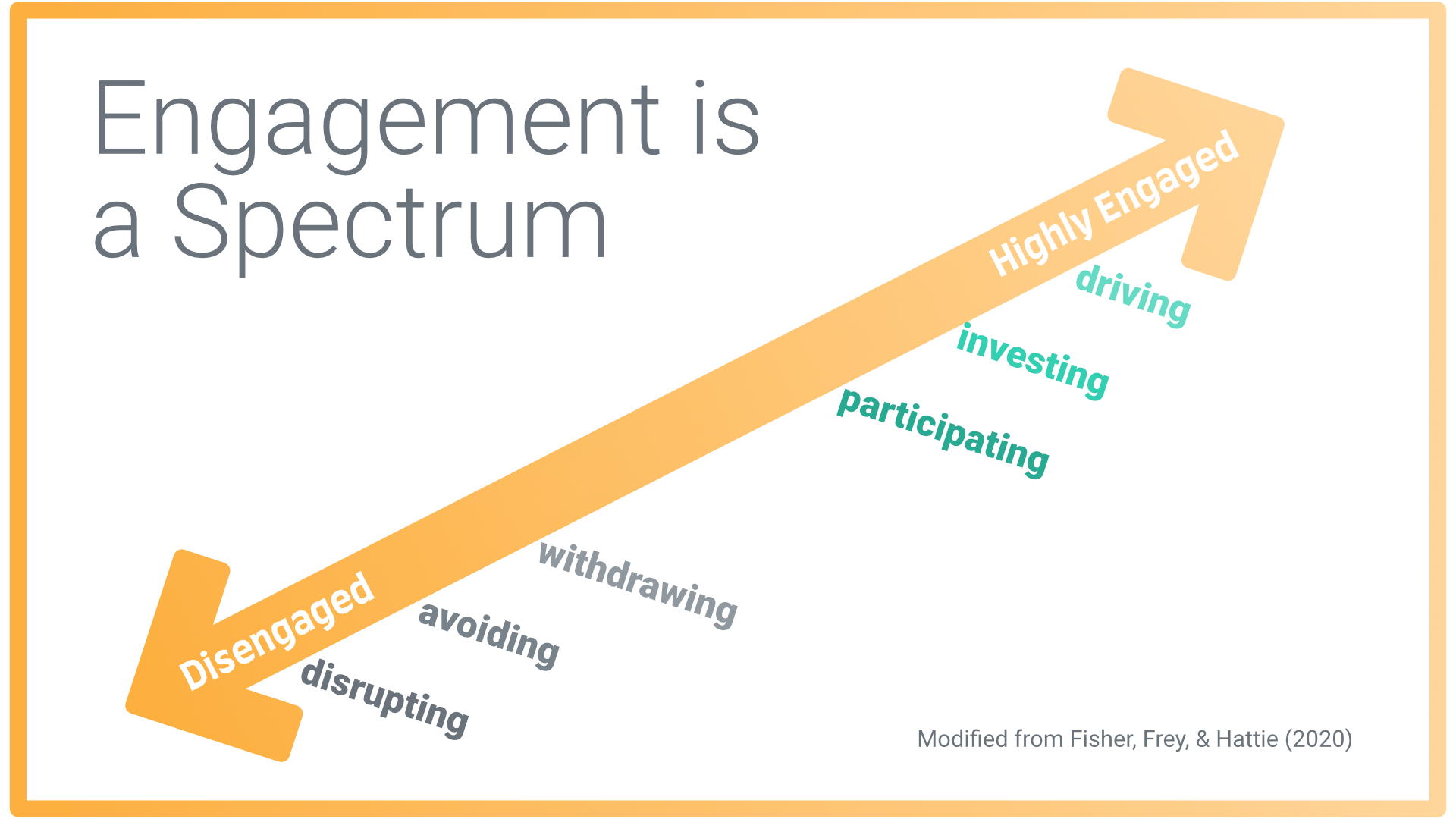This one is for you, teachers! Sure, we talk a lot about having our students reflect on the school year, but we need it just as much as they do. There’s a few layers to this, and the first of them is the engagement reflection. Here we will consider the question “Did I improve the engagement of my hardest to reach students?”
Why is an engagement reflection important?
Before we get into it, let’s remind ourselves of something. Student engagement is challenging. But as Dave Stuart Jr. argues definitively in his 2023 motivation masterpiece The Will to Learn, student engagement and motivation is “context-dependent and malleable.”
Not fixed and perpetual. Difficult and temperamental, yes (note the context-dependent part), but that is the very beauty of the thing. It changes. It can change! The question then becomes a much simpler one. How can I deliberately influence my students’ engagement and motivation?
If you’ve joined us for one of our many Fostering Engagement courses or webinars or events (the micro course is available now!), then you’ve got a leg up on this. Or for that matter, if you’ve read the source material (Dave Stuart Jr., Daniel Pink, Paul Tough, John Hattie, and many more!). If not, take a look at our micro course–it’s a great place to start.
Presently, we instead want to evaluate our efforts on the year. The fear is that if we don’t do that now, we might not manage it before summer, and if not by then, when? The fact is, we want next year to be even better than this year with more engagement and participation, with more motivated and driven students.
To do that, let’s use the engagement spectrum.
Engagement Reflection via the Engagement Spectrum
For the sake of a practical reflection, we want to encourage you to use this engagement spectrum (modified from Fisher, Frey, and Hattie’s The Digital Learning Playbook, 2020).

The thinking here is to remember that every shift toward the right of the spectrum for any student is progress. A student who is presently avoiding work but was previously disrupting others is more engaged (or perhaps we might say less disengaged). Better, still, though, a student who is participating, even if only in the interest of compliance, is more engaged than a student who was previously withdrawing.
Now put on your reflection hat. Think about your year. Think about your students. Think about those most difficult moments and most challenging students. Reflect on both of the following questions:
- What did you do that helped move students toward engagement? What worked, not by default because of new circumstances or context, but by your deliberate action?
- What did you do that failed to move students toward engagement? What things did you try only to have them result in either no change in or even reduced engagement?
Use the spectrum to help yourself see where growth happened and where more growth was necessary.
What will you do differently?
As one colleague recently astutely pointed out to me, reflection is necessary, but reflection without action is mostly worthless. I don’t want you engaging in worthless exercises, especially ones that might take time during an otherwise highly constrained moment.
Therefore, for this to truly help us, we need to make a plan for next actions. Next year will come, and next year’s students will be less than ideally engaged and motivated (at least at some point).
Use this simple process, a variation on Gamestorming’s Flip-it activity:
- STEP 1: Anticipate the challenges. What situations, times in the year, student interactions, etc. do you expect to encounter next year? Hint, there’s a good chance they’ll be similar to ones you’ve encountered in the past!
- STEP 2: Articulate your hopes. What do you hope these situations or interactions will look like instead? What are students doing? What are you doing?
- STEP 3: Plan actions and reactions. What will you do when those things happen? What will you do to minimize the likelihood of them happening at all? In other words, how will you ensure that your hopes are more likely to happen and are happening again soon when not?
Don’t solve every problem at once, either. Start with the most immediate, either the biggest challenge or the challenge that is easiest to address. And be sure to implement proven strategies and approaches that directly influence the desired outcome: students who are motivated and engaged to learn in your classroom!

